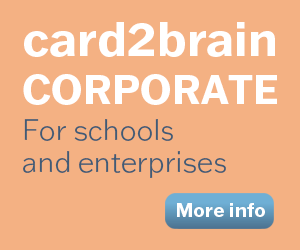Important Key Terms Organizational Behavior
Important Key Terms Organizational Behavior, FHNW 2020
Important Key Terms Organizational Behavior, FHNW 2020
Set of flashcards Details
| Flashcards | 81 |
|---|---|
| Language | English |
| Category | Marketing |
| Level | University |
| Created / Updated | 19.06.2020 / 29.04.2024 |
| Weblink |
https://card2brain.ch/cards/20200619_important_key_terms_organizational_behavior?max=40&offset=40
|
| Embed |
<iframe src="https://card2brain.ch/box/20200619_important_key_terms_organizational_behavior/embed" width="780" height="150" scrolling="no" frameborder="0"></iframe>
|
The processes that account for an individual’s intensity, direction, and persistence of effort towards attaining a goal
Motivation
The degree to which people’s reasons for pursuing goals are consistent with their interests and core values
Self-Concordance
A self-regulation strategy that involves striving for goals through advancement and accomplishment
Promotion Focus
A self-regulation strategy that involves striving for goals by fulfilling duties and obligations
Prevention Focus
An individual’s belief that he or she is capable of performing a task
Self-Efficacy (Theory)
The investment of an employee’s physical, cognitive, and emotional energies into job performance
Job Engagement
The way the elements in a job are organized
Job Design
The degree to which a job requires a variety of different activities
Skill Variety
The degree to which a job requires completion of a whole and identifiable piece of work
Task Identity
The degree to which a job has a substantial impact on the lives or work of other people
Task Significance
The degree to which a job provides substantial freedom and discretion to the individual in scheduling the work and in determining the procedures to be used in carrying it out
Autonomy
The degree to which carrying out the work activities required by a job results in the individual obtaining direct and clear information about the effectiveness of his or her performance
Feedback
The periodic shifting of an employee from one task to another
Job Rotation
Flexible work hours
Flextime
An arrangement that allows two or more individuals to split a traditional 40-hour-a-week job
Job Sharing
Working from home at least 2 days a week through virtual devices that are linked to the employer’s office
Telecommuting
A participative process that uses the input of employees to increase employee commitment to organizational success
Employee Involvement and Participation (EIP)
A process in which subordinates share a significant degree of decision-making power with their immediate superiors
Participative Management
A system in which workers participate in organizational decision making through a small group of representative employees
Representative Participation
A pay plan that bases a portion or all of an employee’s pay on some individual and/or organizational measure of performance
Variable-Pay Program
A pay plan in which workers are paid a fixed sum for each unit of production completed
Piece-Rate Pay Plan
A pay plan based on performance appraisal ratings
Merit-Based Pay Plan
A pay plan that rewards employees for recent performance rather than historical performance
Bonus
An organization-wide program that distributes compensation based on some established formula designed around a company’s profitability
Profit-Sharing Plan
A company-established benefits plan in which employees acquire stock, often at below-market prices, as part of their benefits
Employee Stock Ownership Plan (ESOP)
A benefits plan that allows each employee to put together a benefits package tailored to his or her own needs and situation
Flexible Benefits
The ability to influence a group toward the achievement of a vision or set of goals
Leadership
The extent to which a leader has job relationships that are characterized by mutual trust, respect for subordinates’ ideas, and regard for their feelings
Consideration
The degree of confidence, trust, and respect that subordinates have in their leaders
Leader-Member Relations
The degree to which job assignments are regimented/organized
Task Structure
Influence derived from one’s formal structural position in the organization; includes the power to hire, fire, discipline, promote, and give salary increases
Position Power
A long-term strategy for attaining a goal or goals
Vision
A formal articulation of an organization’s vision or mission
Vision Statement
Leaders who guide or motivate their followers in the direction of established goals by clarifying role and task requirements
Transactional Leaders
Leaders who inspire, act as role models, and intellectually stimulate, develop, or mentor their followers, thus having a profound and extraordinary effect on them
Transformational Leaders
Leaders who know who they are, know what they believe in and value, and act on those values and beliefs openly and candidly
Authentic Leaders
Supervision that is hostile both verbally and nonverbally
Abusive Supervision
A leadership style marked by going beyond the leader’s own self-interest and instead focusing on opportunities to help followers grow and develop
Servant Leadership
A positive expectation that another will not act opportunistically
Trust
How likely an employee is to trust a leader
Trust Propensity









